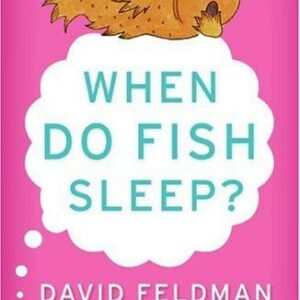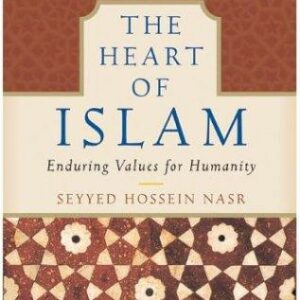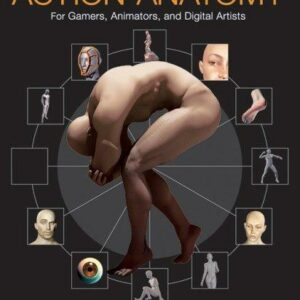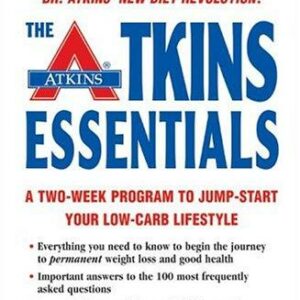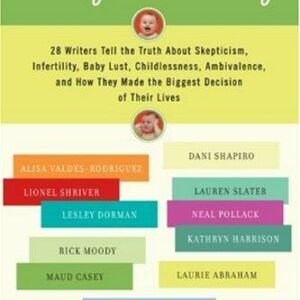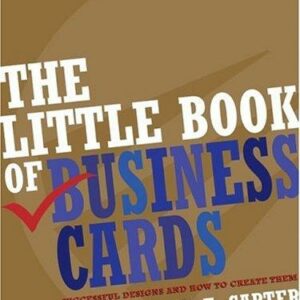Lower Your Blood Pressure in Eight Weeks
$18.00
| Title | Range | Discount |
|---|---|---|
| Trade Discount | 5 + | 25% |
- Description
- Additional information
Description
Learn how to lower high blood pressure with this step-by-step eight-week plan!
The numbers speak for themselves. More than 50 million Americans suffer from high blood pressure—and yet despite the billions we spend on medication, the death rate from high blood pressure has risen 36 percent in the past decade. Clearly, the time has come for a radical new treatment plan. And that’s exactly what Dr. Stephen T. Sinatra delivers in this invaluable new book.
All too often people with high blood pressure get the same frustrating advice from their doctors: lose some weight, lay off the salt, and fill a bunch of prescriptions. One of the nation’s leading authorities on cardiovascular disease, Dr. Sinatra offers a different approach. Through an eight week plan that takes into account your lifestyle, medical history, and special needs, this book will dramatically lower your blood pressure while at the same time reducing or even eliminating your need for medications. Inside you will discover
• How to diagnose high blood pressure and get the help you need fast
• A meal-by-meal diet plan you can start following today
• The relationship between hypertension, cholesterol, heart disease, and stroke
• The special risk factors for women, the elderly, and African Americans
• Easy, enjoyable exercises you can make part of your daily routine
• How dietary supplements work and which ones are best for you
• Which medications to use—and which to avoid
• Finding the stress-reduction program that works for you
Clearly written, user friendly, grounded in science and common sense, and full of inspiring case histories and delicious recipes, Lower Your Blood Pressure in Eight Weeks is the one book that deals with all the factors involved in hypertension. This program has worked wonders with hundreds of Dr. Sinatra’s patients. Now it will do the same for you!Stephen T. Sinatra is the co-author of The Sinatra Solution: Metabolic Cardiology; The Great Cholesterol Myth: Why Lowering Your Cholesterol Won’t Prevent Heart Disease; and Nutritional and Integrative Strategies in Cardiovascular Medicine. Dr. Sinatra is an esteemed cardiologist whose integrative methods for treating cardiovascular disease have revitalized patients with even the most progressed forms of illness.Hypertension 101
Maybe you’re picking up this book because you’ve just been told you have high blood pressure and you’re looking for some answers. Or maybe you were diagnosed a long time ago and you’re just tired of taking all that medication. Or perhaps traditional medicine has failed to keep your blood pressure under control, and you’re searching for a new approach.
Well, my friend, whatever your reason for opening this book, I’m just glad you’re here. High blood pressure is something you need to know about, and something you need to take seriously. I hope this book informs you and provides you with some new options. I’ve learned a lot about treating hypertension these last thirty years, and I’ve found some really novel approaches that have turned my patients’ lives around, so I think I can help.
It’s hard to overstate the impact of high blood pressure on our health, but let’s just start with the cold, hard facts:
•Fifty million Americans (one out of five) have high blood pressure.
•Hypertension is more common in men and in folks over sixty-five years of age.
•More than half of people over sixty-five are hypertensive.
•High blood pressure is more common in African Americans than in white Americans.
•Hypertension is serious because it places you at increased risk for blindness, kidney damage, heart disease, an enlarged heart, heart attack, and stroke.
•We spend more than $3 billion on antihypertensive prescription drugs, more than for medications for any other diagnosis.
•According to the National Heart, Lung, and Blood Institute, 26 percent of people on medication for hypertension still have unacceptably high blood pressure.
•Despite new drugs and diagnostic techniques, the death rate from hypertension has risen 36 percent in the past decade.
Clearly, traditional drug and diet therapies for hypertension are falling far short of their intended goals. I believe that part of the problem is that, as physicians, we’re taught to refer to the step-by-step process of a one-size-fits-all algorithm in designing a program of care for our hypertensive patients. What’s an algorithm? Basically, it’s a step-by-step protocol to be followed. In treating hypertension, the algorithm goes something like this: Step one is that we are to prescribe drug A. After a month or so, if treatment A doesn’t work, then we are to prescribe drug B. If B worked somewhat but we didn’t get the results we were seeking, then we add in drug C, possibly juggling the dose of A or B. A typical algorithm doctors follow for treating blood pressure includes the following: a diuretic first, followed by a beta blocker or calcium channel blocker, then an ACE inhibitor or angiotensin receptor blocker (ARB). This is a very structured, precise system . . . but that’s just not how the human body functions.
Now don’t get me wrong. There is an appropriate place for algorithms. They work best in an emergency situation such as a hypertensive crisis or a heart attack, when time is critical and the physician may have just met the patient and knows little about him or her. Algorithms establish the standard of care that you receive, and that’s a good thing. But once the crisis is over, you want to receive a more personalized treatment plan that takes into consideration your personal needs and your own physiology.
Each of us is an individual, with a unique body chemistry and physiology. An algorithm can only work so far, for I have found that blood pressure control is really more of an art than a science. As a cardiologist, I need to tune in to each individual to design a hypertension reduction program that gets at the root of his or her problem. To understand how this approach works, I need to explain some of the basic concepts behind the problems. Let me fill you in on what I consider as I sit across from a new hypertensive patient who’s seeing me in my Heart Center.
Simply stated, blood pressure is a measurement of how hard your heart has to work to circulate blood through your body. Chronically elevated blood pressure can hurt your body in a number of ways, primarily by adding to the workload of your heart and arteries. And when your heart must work harder than normal for a long period of time, like any other muscle in your body, it gets bigger and bigger. Slightly bigger may be okay, but if your heart gets extremely enlarged and sluggish, it will begin to fail. Then it will have a hard time meeting your body’s oxygen demands.
When your blood pressure is too high, the excessive shear force of blood coursing over your arterial walls causes the cells there to become weakened and porous. Put simply, when the pressure in your heart and vascular bed is high, the blood goes through the twists and turns of your arteries much like race cars hugging the walls on the tight turns in the Indy 500.
Over time, the blood’s high shear force under pressure wears down the healthy, glistening surface of your arterial walls, carving out little vulnerable patches. These worn, inflamed areas are open invitations to toxic substances such as heavy metals, the chemicals in cigarette smoke, high insulin levels, or excessive amounts of low-density lipoprotein (LDL) or “bad” cholesterol that are just looking around to take up residence somewhere, preferably the smooth muscle lining of your coronary arteries and arteries in other locations such as the brain and neck.
Add to this the fact that as you age, your arteries become stiffer and less elastic, decreasing their ability to stretch with the pulsation of each heartbeat. Picture this scenario as it builds momentum with time, and you have an image of what’s going on in your own body, right now, if your blood pressure is still elevated. There’s no time to waste. You must take action.
I hope that now you have a better understanding of how high blood pressure tends to speed the process we called atherosclerosis or arteriosclerosis. Hardened or narrowed arteries may not be able to supply the amount of blood your body’s organs need; the end result is that they can’t work properly. Another risk is that a blood clot may get stuck in an artery roughened and narrowed by atherosclerosis, depriving part of the body of its normal blood supply and potentially resulting in a stroke or a heart attack.
If a blood vessel gets clogged in the brain, you can have what we call a thrombotic stroke (thrombus = clot). Or you can have what we call a hemorrhagic (bleeding) stroke if a cerebral artery wall weakens to the point of rupture. A heart attack used to be called a coronary thrombosis, referring to a blot clot lodging in a coronary artery, cutting off blood flow to a region of the heart muscle. Now we use the term “myocardial infarction” (MI), which indicates the damage it causes (myo = muscle, cardio = heart, infarct = area of tissue death).
THE STATISTICS ARE STAGGERING
Now you can better understand the statistics. Compared to people with controlled high blood pressure, people with uncontrolled high blood pressure are:
•seven times more likely to have a stroke
•three times more likely to develop coronary heart disease
•six times more likely to develop congestive heart failure (CHF)
Untreated, high blood pressure is the number one cause of strokes. And hypertension didn’t get the nickname “the silent killer” for nothing. Often a person with hypertension has no symptoms warning of the condition, so high blood pressure can go undiagnosed for years. That’s where regular checkups and blood pressure screening programs come in, and I advise everyone to take advantage of them.
We’ve just looked at how hypertension can cause heart disease, but note that it actually triples your risk for it, and that’s independent of other traditional risk factors you may have, including family history, obesity, smoking, elevated lipid levels, sedentary lifestyle, being over fifty, being male, and stress. I even check for newer risk factors such as Lp(a), C-reactive proteins (CRP), oxidized LDL, homocysteine, and others that are screened with blood testing. Lp(a), for example, is a highly inflammatory cholesterol particle that accelerates artherosclerosis.
In fact, the combination of elevated Lp(a) and high homocysteine puts people at even greater risk for a coronary event. Add high blood pressure to the mix and you’re in double handcuffs. For a woman with high blood pressure and high blood levels of homocysteine (a free-radical-inducing amino acid that causes premature aging of blood vessels), the incidence of stroke is twenty-five times higher than for the general population. So if you’re a hypertensive women who doesn’t know her homocysteine level, then I suggest you ask your doctor to check your blood, because reducing homocysteine is critical but simple—all you need is B vitamin support in order to lower your risk of stroke. And if you’re a woman with high blood pressure and a family history of stroke, call your physician today to have a test ordered. Remember my motto: Prevention is always easier than cure.
Congestive heart failure happens when the heart is unable to pump enough blood to meet the needs of the body’s tissues. Your heart muscle can become weak due to a variety of causes, such as scarring from heart attack(s), stretching and enlargement from hypertension, or other pathological conditions. The bottom line is that a weak heart can’t keep the blood moving in a forward fashion; some of it backs up to the lungs, then the tissues. Folks with CHF may notice swollen ankles and fingers. A doctor or nurse can even hear fluid crackling in the lungs with a stethoscope. When the fluid backs up abruptly, making it nearly impossible to breathe, then CHF has progressed to pulmonary edema, a medical emergency.
The long and short of it is that high blood pressure puts you at high risk for the medical problems I’ve described and others, including damage to your kidneys, your eyes, and more.
WHO GETS HIGH BLOOD PRESSURE?
Hypertension is an equal-opportunity disease. Rich or poor, black or white, male or female, high blood pressure can strike anyone, often without warning. Unlike other diseases and ailments, you can’t feel high blood pressure and it isn’t heralded by chest pain, dizziness, or any other signs of an imminent problem.
And, as you can imagine, because there are no symptoms or warning signs, nearly one-third of the fifty million Americans walking around with hypertension don’t even know that they have it. All too often, the first sign of trouble is a stroke or heart attack.
Practically every day in my office, a patient is shocked and frightened to be told that his or her blood pressure is too high. While no one wants to hear bad news, I assure the patient that the discovery of hypertension is the best thing that could have happened! Now that we know there’s a problem, we can at least do something about it. It didn’t take a crippling stoke or fatal heart attack to reveal the threatening situation.
While we don’t fully understand the causes of hypertension, some people seem to be more likely to develop the problem. African Americans develop high blood pressure more often than whites, and for them it also tends to occur earlier and be more severe. In fact, hypertension affects about one out of every three African Americans. And I have to tell you that African American women are actually my toughest population to treat for blood pressure. In fact, after twenty-five years, I can honestly say that for black women, pharmacological agents alone are almost never successful. They are one group who more often needs to add lifestyle modifications, such as diet and exercise, to help reduce body mass index (if overweight status is the problem causing the hypertension). Additionally, Mexican Americans and other Hispanics are more likely to suffer from high blood pressure than white Americans.
Heredity also seems to play a role. Hypertension runs in families, so if your parents or other close relatives have high blood pressure, then you’re more likely to develop the problem. In general, advancing age is a risk factor for developing high blood pressure; it occurs most often in people over age thirty-five. Men seem to develop it most often between thirty-five and fifty, while women are more likely to see their blood pressure start climbing after menopause. Men have a greater risk of becoming hypertensive than women until age fifty-five, when their respective risks are similar. But by the time they’ve reached age seventy-five and beyond, women are more likely to develop high blood pressure than men are.US
Additional information
| Weight | 13 oz |
|---|---|
| Dimensions | 0.9800 × 5.5100 × 8.1800 in |
| Imprint | |
| Format | |
| ISBN-13 | |
| ISBN-10 | |
| Author | |
| Audience | |
| BISAC | |
| Subjects | nutrition books, natural, clean, vitamins, motivational books, diets, healthy cookbook, health books, cook books, diet books, clean eating, medical books, clean eating cookbook, diet plan, meal planner, lower blood pressure, diet and nutrition, lower your blood pressure, how to lower blood pressure, how to lower high blood pressure, Cooking, HEA020000, healing, wellness, self help, health, CKB039000, nutrition, motivation, healthy, self improvement, Food, Recipes, Cookbooks, fitness, cookbook, diet, self help books, how to, healthy living |



